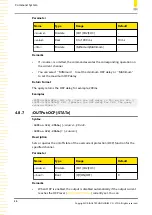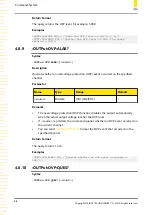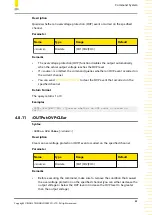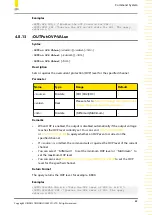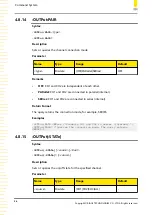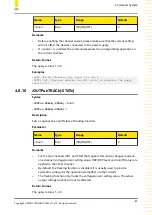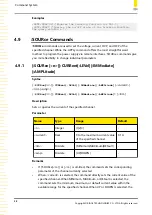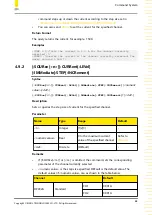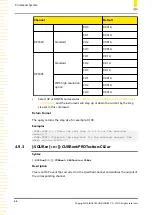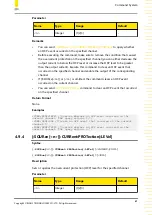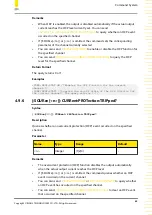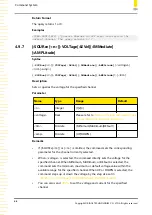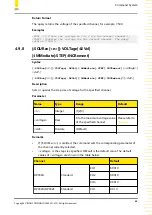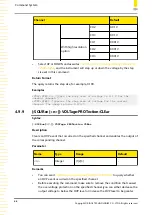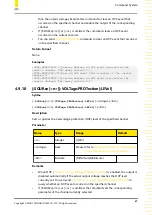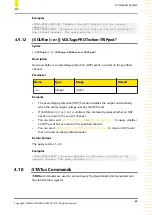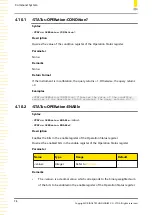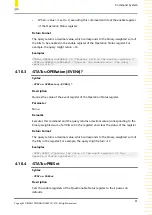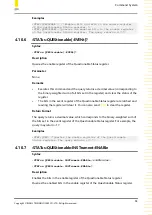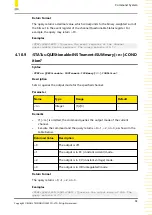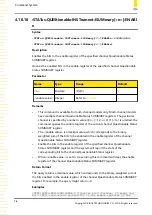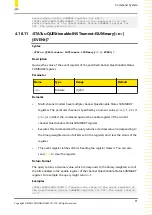
Name
Type
Range
Default
<current>
Real
Please refer to
Table 4.33 Range and default value
of overvoltage/overcurrent protection
<lim>
Discrete
{MINimum|MAXimum}
-
Remarks
•
When OCP (
[:SOURce[<n>]]:CURRent:PROTection:STATe
) is enabled, the output is
disabled automatically if the actual output current reaches the OCP level
currently set. You can send
[:SOURce[<n>]]:CURRent:PROTection:TRIPped?
to
query whether an OCP event occurred on the specified channel.
•
If [:SOURce[<n>]] or [<n>] is omitted, the command sets the corresponding
parameter of the channel currently selected.
•
to set the OCP level for the specified
channel.
Return Format
The query returns the OCP level, for example, 2.000.
Examples
:CURR:PROT 2 /*Sets the OCP level to 2 A for the current channel.*/
:CURR:PROT? /*Queries the OCP level for the current channel. The
query returns 2.000.*/
4.9.5
[:SOURce[<n>]]:CURRent:PROTection:STATe
Syntax
[:SOURce
[<
n>]
]:CURRent:PROTection:STATe
<
bool>
[:SOURce
[<
n>]
]:CURRent:PROTection:STATe?
Description
Sets or queries the on/off state of the overcurrent protection (OCP) function for the
specified channel.
Parameter
Name
Type
Range
Default
<n>
Integer
{1|2|3}
-
<bool>
Bool
{ON|OFF|1|0}
0
Command System
62
Copyright ©RIGOL TECHNOLOGIES CO., LTD. All rights reserved.
Summary of Contents for DP900 Series
Page 1: ......
Page 133: ...d Exit Programming Examples Copyright RIGOL TECHNOLOGIES CO LTD All rights reserved 125 ...
Page 141: ......



